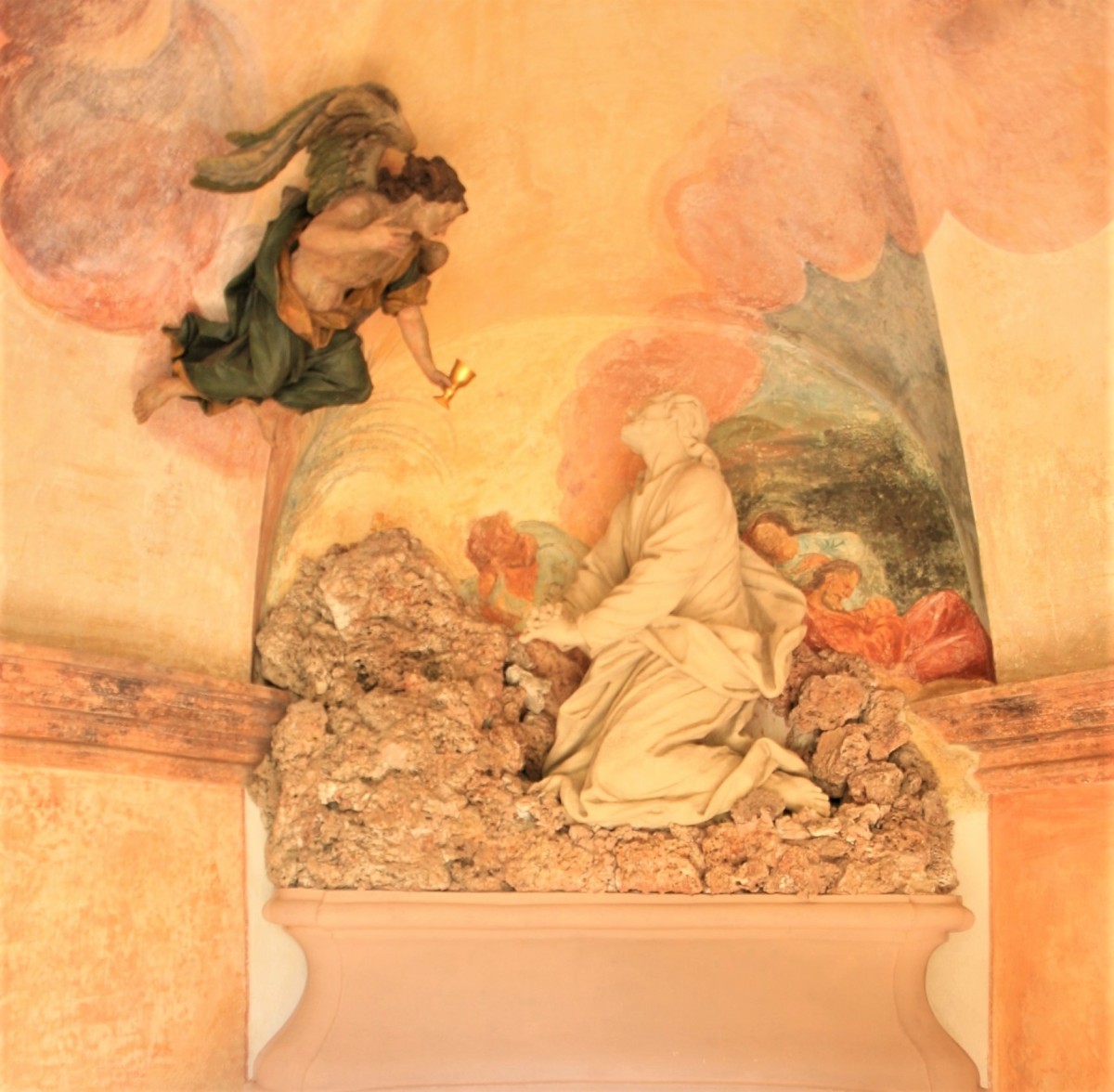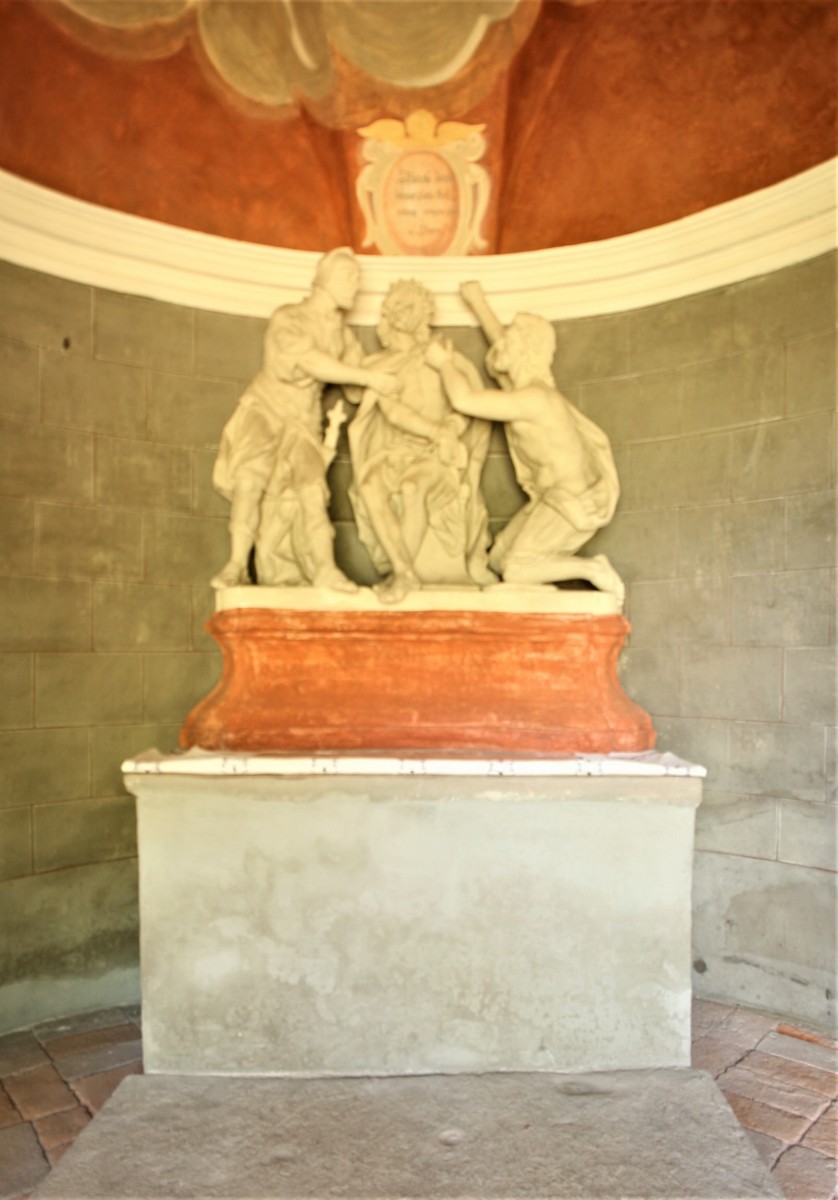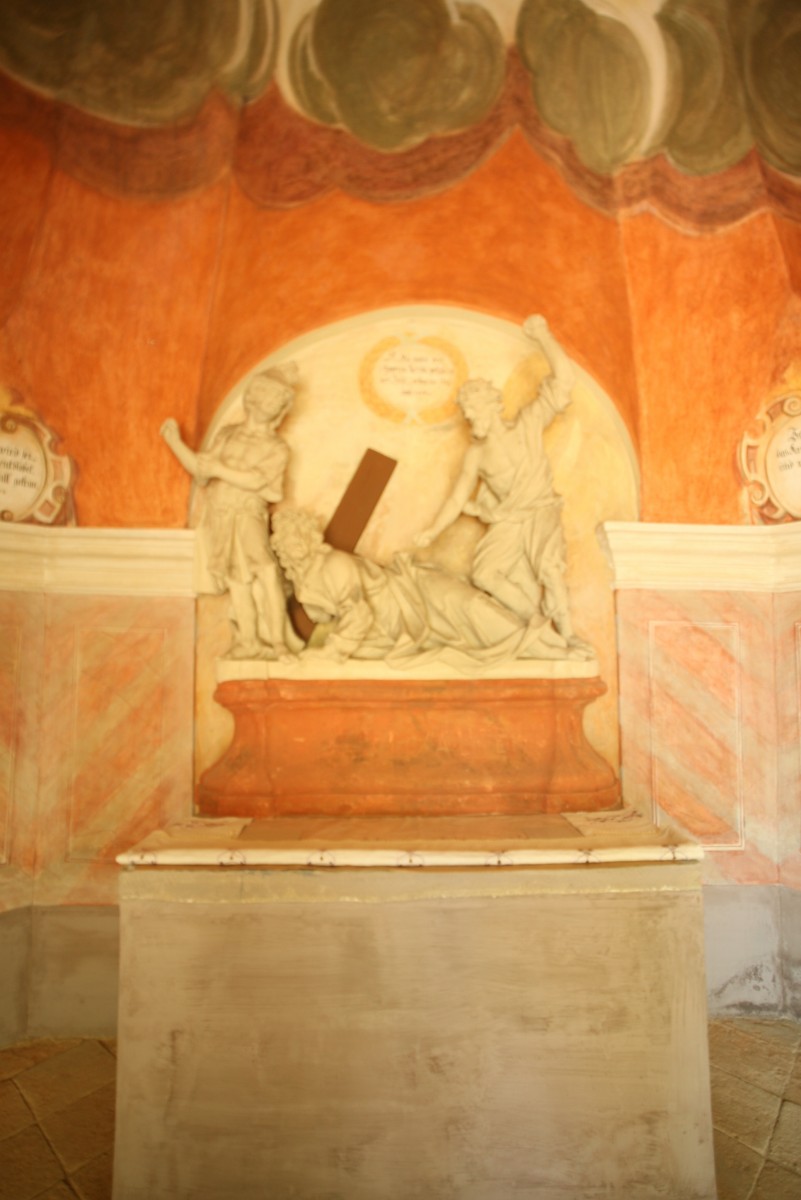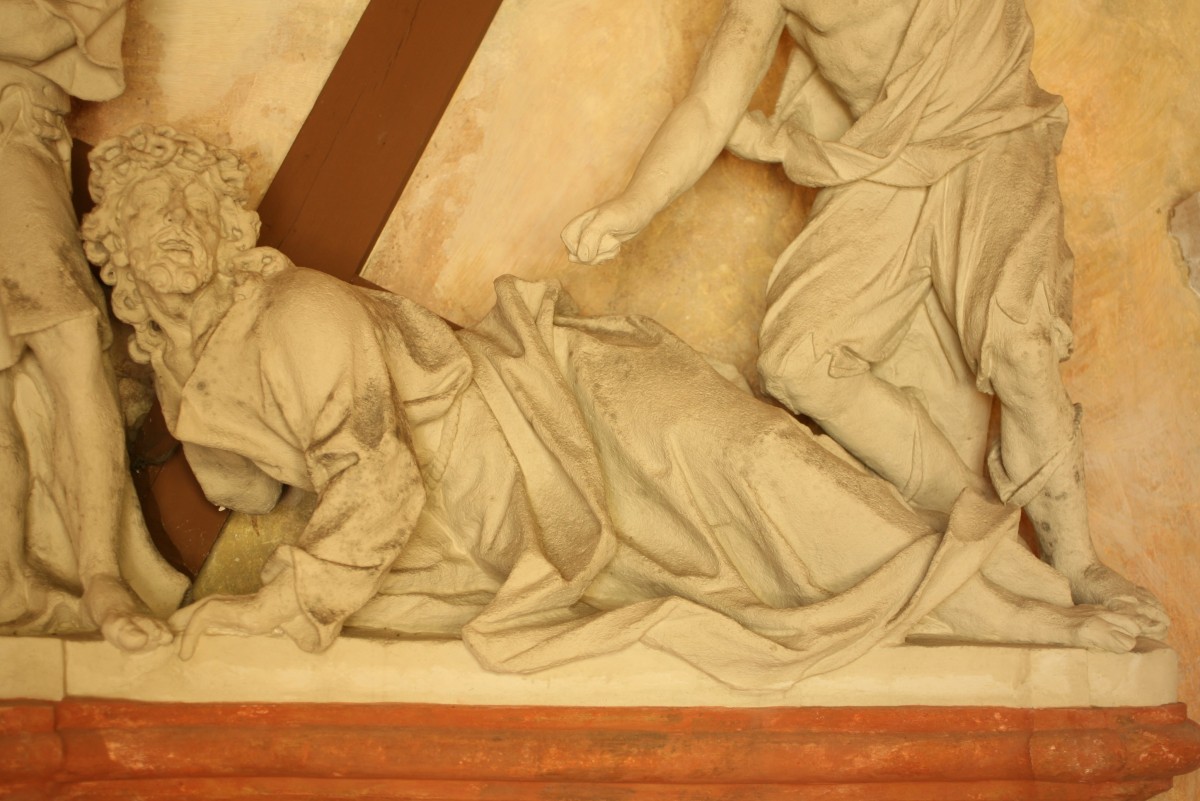Location
Austria, Styria, Bärnbach
Holy Mountain (Heiliger Berg)
Bärnbach
Artwork
Four sculptural groups in the passion chapels of the Holy Mountain in Bärnbach
Type
Sculptural group
Inscriptions
- PHI. ST. FEC. (on the sculptural group depicting the flagellation of Christ)
Critical History
Beside the three sculptures of Mary Magdalene, Mary and St John, there are also sculptural groups in the four passion chapels on the calvary of Bärnbach. They are signed Ph. J. Straub.1 Horst Schweigert points out that the sculptures show the typical Straub-physiognomy: high forhead, open and full lips, bulging eyes as well as a drilled hairmass with curls hanging into the forehead.2
The chapels show different ground plans and coloured walls in the interior and they are dedicated to the mysteries of the rosary. Each of them contains a stone group depicting scenes of the Passion. The first shows Christ on the Mount of Olives, kneeling on a rock formation. His hands are folded and he looks up to a wooden angel, which offers him a golden cup. The second shows the Flagellation of Christ, who is standing at a column while two men are tormenting him. The third depicts the sculptural group of Christ and two captors, who put the crown of thorns on his head. The last chapel contains the sculptural group depicting Christ who falls under the cross. The sculptures are very detailed and vivacious, nevertheless there are certain uncertainties concerning the anatomical correctness which refer to a workshop participation. The carved wooden angel is of remarkable quality.
Construction / Execution
The sculptures are made of carved sandstone and they are situated on sarcophagus-shaped bases in flat niches. The attributes are partially made of wood/metal, some are missing. The angel of the Mount of Olives-scene is made of carved wood and coloured and fixed to the chapel’s wall.
Some missing parts have been supplemented (e.g. heads of both captors who put the crown of thorns on Christ’s head as well as the sword grip of the left one). The supplements are executed in a very coarse manner.
Components
- Sculpture
- Author: (workshop) Philipp Jakob Straub
- Completed: 1730 – 1740
- Technique(s): stone carving
- Material(s): sandstone
- Polychromy
- angel + attributes
- Completed: 1730 – 1740
Comment
The measurements of the sculptural groups are: Christ on the Mount of Olives (Christ: H 103 cm, W 150 cm; angel: H 80 cm). Flagellation of Christ (Christ: H 145 cm, left captor: H 133 cm, right captor: H 170 cm). Christ with the crown of thorns (Christ: H 115 cm, kneeling man: H 116 cm, soldier: H 132 cm). Christ falls under the cross (Christ: H 58 cm, W 118 cm, left captor: H 124 cm, right captor: H 127 cm).
Images
- The sculptural group Christ on the Mount of Olives, passion chapel, Holy Mountain, Bärnbach (photo by Diocesan Museum Graz, Eva Kullmer, 2007)
- The Flagellation of Christ, passion chapel, Holy Mountain, Bärnbach (photo by Diocesan Museum Graz, Eva Kullmer, 2007)
- Two captors putting the crown of thorns on Christ’s head, passion chapel, Holy Mountain, Bärnbach (photo by Diocesan Museum Graz, Eva Kullmer, 2007)
- Two captors putting the crown of thorns on Christ’s head, detail, passion chapel, Holy Mountain, Bärnbach (photo by Diocesan Museum Graz, Eva Kullmer, 2007)
- Christ falls under the cross, detail, passion chapel, Holy Mountain, Bärnbach (photo by Diocesan Museum Graz, Eva Kullmer, 2007)
- Christ falls under the cross, detail, passion chapel, Holy Mountain, Bärn-bach (photo by Diocesan Museum Graz, Eva Kullmer, 2007)
Catalogue entry prepared by Christina Pichler And Dagmar Probst
Recommended citation: Christina Pichler And Dagmar Probst, Four sculptural groups in the passion chapels of the Holy Mountain in Bärnbach, in: TrArS – Tracing the Art of the Straub Family, 2018, (accessed 20/11/2025) URL






